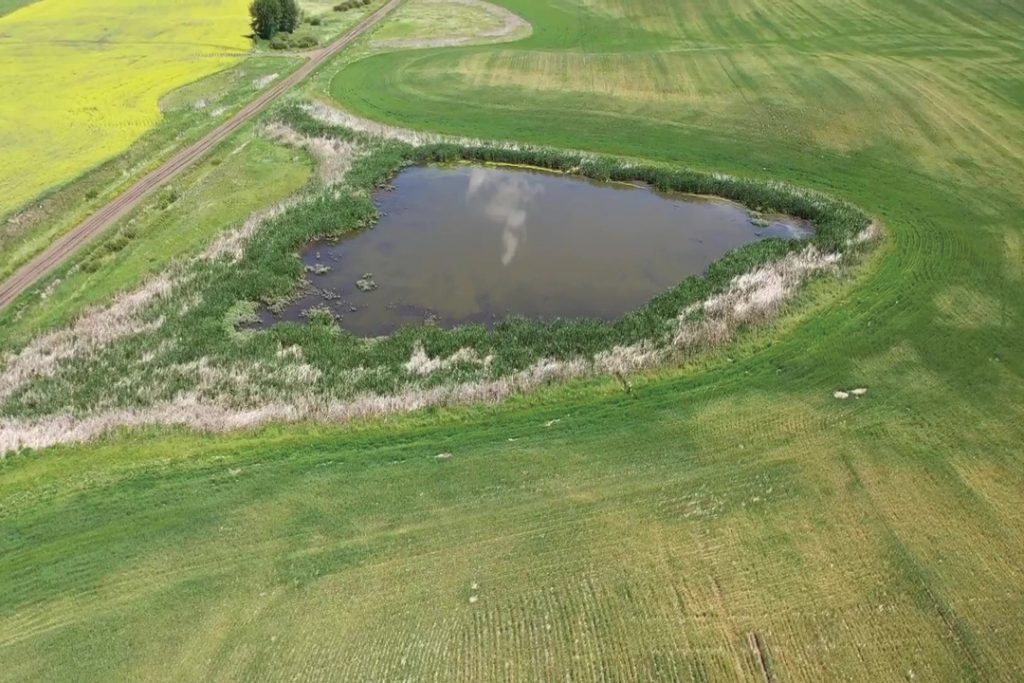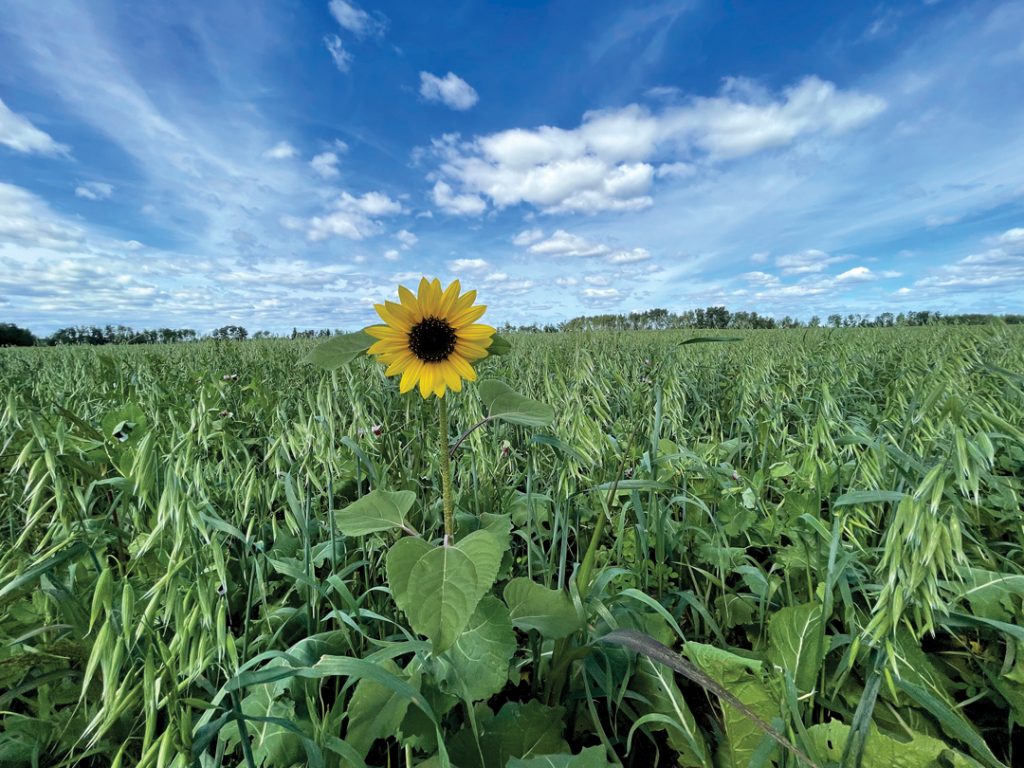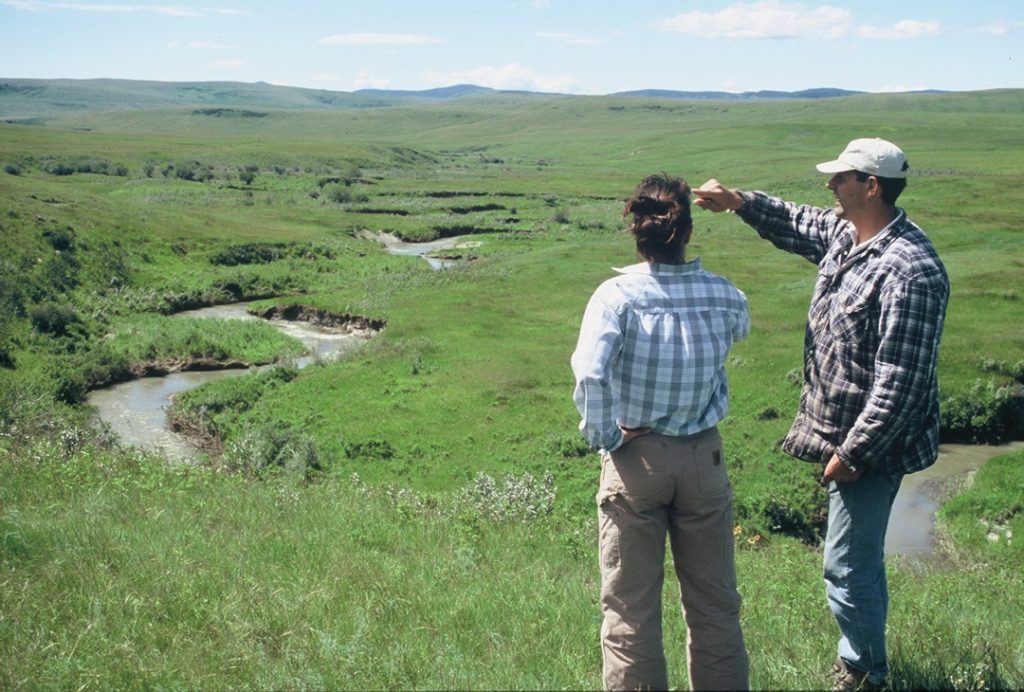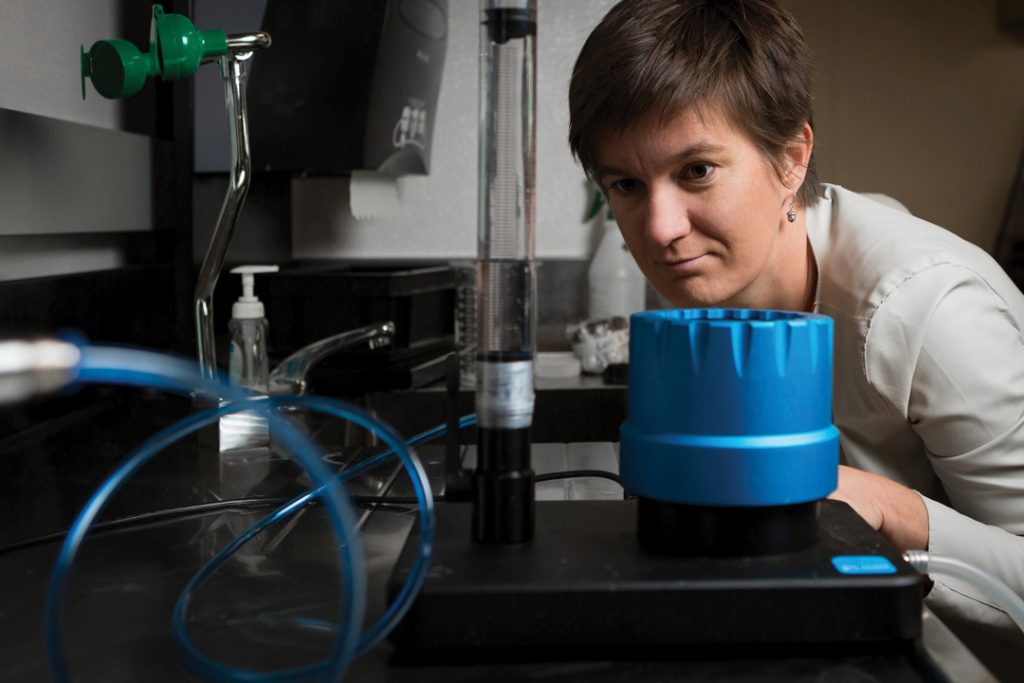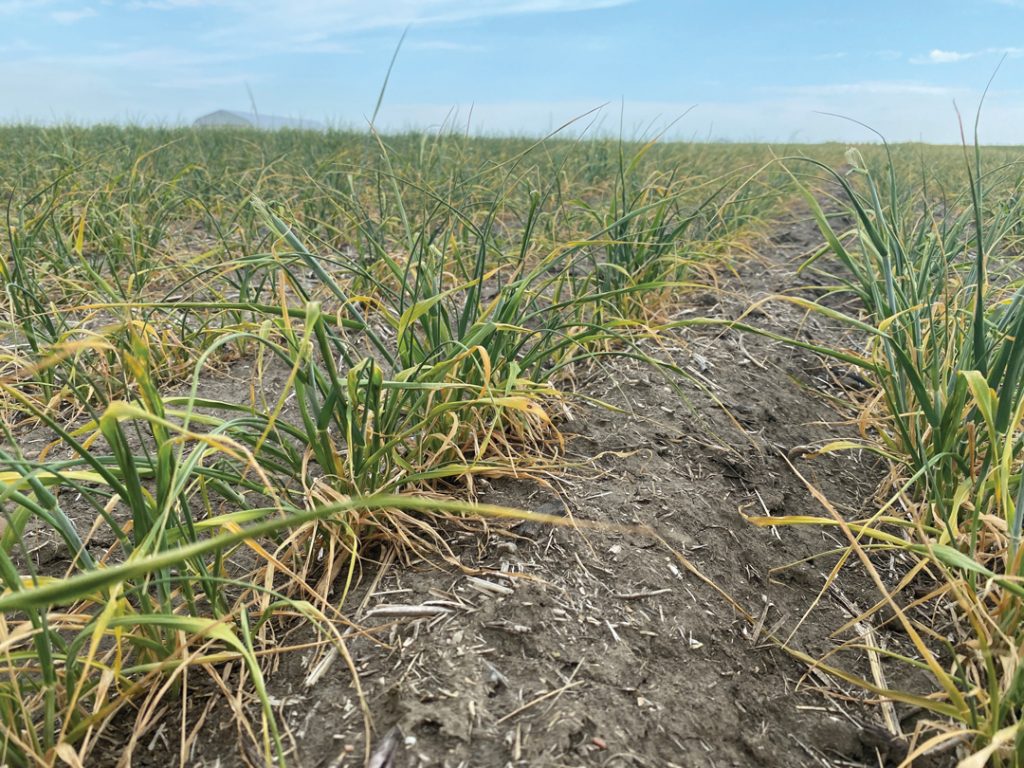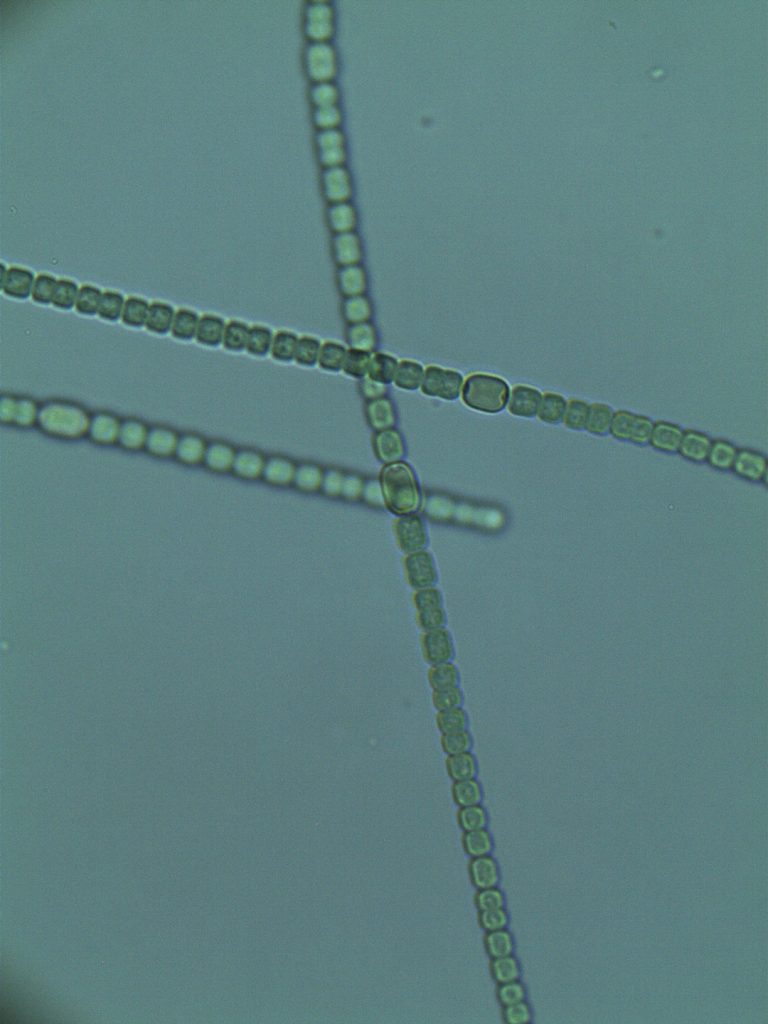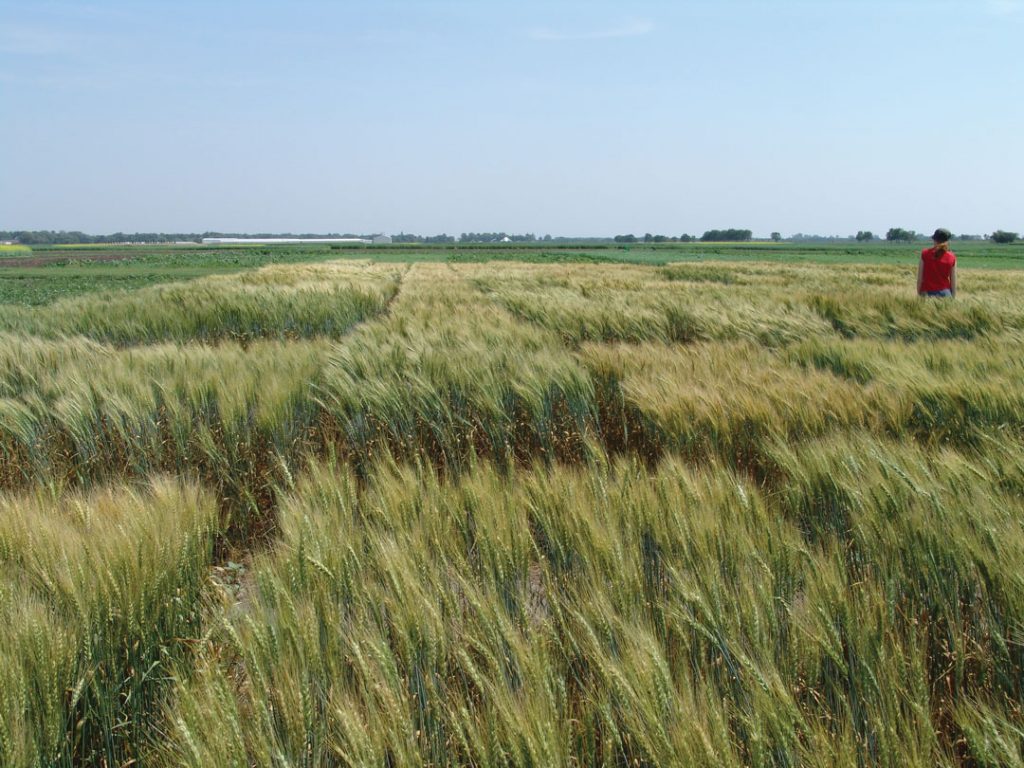INPUT ACCOUNTABILITY
On a bright but chilly day last October, Nevin Rosaasen, Alberta Pulse Growers (APG) sustainability and government relations lead, and Hayley Webster, the commission’s Adaptation Resilience Training project assistant, made their way to a small slough on Hannah Konschuh’s farm near Cluny. Konschuh, a former Alberta Wheat Commission (AWC) director, joined them for the short hike down from an adjacent dirt road to examine this modest, semi-permanent wetland.




